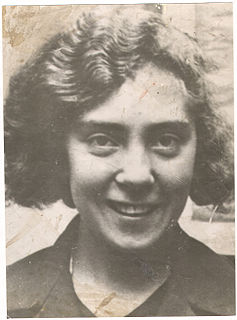 W
WTosia Altman was a courier and smuggler for Hashomer Hatzair and the Jewish Combat Organization (ŻOB) during the German occupation of Poland and the Warsaw Ghetto Uprising.
 W
WAbraham Blum was Polish-Jewish socialist activist, one of the leaders of the Bund in the Warsaw Ghetto and a participant in the Warsaw Ghetto Uprising.
 W
WA well-known Holocaust photograph depicts three Jewish women who fought in the Warsaw Ghetto Uprising, took shelter in a bunker with a weapons cache, and were forced out by SS soldiers. One of the women, Bluma Wyszogrodzka (center), was shot. The other two, Małka Zdrojewicz (right) and Rachela Wyszogrodzka (left) were marched to the Umschlagplatz and deported to Majdanek concentration camp, where Wyszogrodzka was murdered. Jürgen Stroop, the SS officer who commanded the suppression of the uprising, admired the bravery of female combatants and included the photograph in one of the copies of his official report. The photograph has become symbolic of Jewish resistance to the Holocaust.
 W
WA well-known Holocaust photograph depicts three Jewish women who fought in the Warsaw Ghetto Uprising, took shelter in a bunker with a weapons cache, and were forced out by SS soldiers. One of the women, Bluma Wyszogrodzka (center), was shot. The other two, Małka Zdrojewicz (right) and Rachela Wyszogrodzka (left) were marched to the Umschlagplatz and deported to Majdanek concentration camp, where Wyszogrodzka was murdered. Jürgen Stroop, the SS officer who commanded the suppression of the uprising, admired the bravery of female combatants and included the photograph in one of the copies of his official report. The photograph has become symbolic of Jewish resistance to the Holocaust.
 W
WJózef Celmajster was a Polish physician of Jewish descent, first lieutenant of the Polish Army, chief of medical department of the Jewish Military Union (ŻZW) in the Warsaw Ghetto and OW-KB.
 W
WPaweł Frenkiel was a Polish Army officer and a Jewish youth leader in Warsaw and one of the senior commanders of the Jewish Military Union, or the ŻZW. Although one of the most important leaders of the Warsaw Ghetto Uprising and the Jewish resistance in the months preceding April 1943, Frenkiel is also one of the least well known to historians, and both his earlier life and his ultimate fate are a subject of some controversy.
 W
WMira Fuchrer was a Polish Jewish activist of the Jewish resistance movement in the Warsaw Ghetto during the occupation of Poland in World War II; member of the Jewish Combat Organization (ŻOB), and fighter in Warsaw Ghetto Uprising of 1943. Surrounded by the Germans and their auxiliaries, she refused to surrender. It is believed that Mira committed suicide in the ghetto bunker with a group of her co-conspirators.
 W
WMartin Gray was a Holocaust survivor who emigrated to the West, and published books in French about his experiences during World War II, in which his family was killed in Poland.
 W
WIsrael Gutman was a Polish-born Israeli historian and a survivor of the Holocaust.
 W
W'Izrael Kanał, also known as Mietek and Jehuda, was a Jewish resistance soldier in the Warsaw Ghetto and a participant of the Warsaw Ghetto Uprising in 1943.
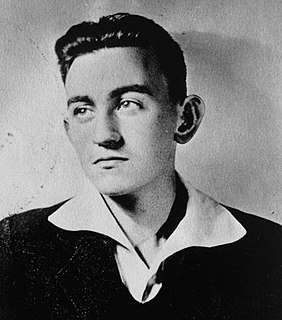 W
WMichał Klepfisz was a chemical engineer, activist for the Bund, and member of the Jewish Morgenstern sports organization. During World War II he belonged to the Jewish Combat Organization, fighting the Nazi German forces in Poland. He was killed in the Warsaw Ghetto Uprising and was posthumously decorated by the Polish government in exile with a Silver Cross of the Virtuti Militari.
 W
WMieczysław Jan Ireneusz Lubelski was a Polish monumental sculptor and ceramist.
 W
WZivia Lubetkin was one of the leaders of the Jewish underground in Nazi-occupied Warsaw and the only woman on the High Command of the resistance group Żydowska Organizacja Bojowa (ŻOB). She survived the Holocaust in German-occupied Poland and immigrated to Mandate Palestine in 1946, at the age of 32.
 W
WA well-known Holocaust photograph depicts three Jewish women who fought in the Warsaw Ghetto Uprising, took shelter in a bunker with a weapons cache, and were forced out by SS soldiers. One of the women, Bluma Wyszogrodzka (center), was shot. The other two, Małka Zdrojewicz (right) and Rachela Wyszogrodzka (left) were marched to the Umschlagplatz and deported to Majdanek concentration camp, where Wyszogrodzka was murdered. Jürgen Stroop, the SS officer who commanded the suppression of the uprising, admired the bravery of female combatants and included the photograph in one of the copies of his official report. The photograph has become symbolic of Jewish resistance to the Holocaust.
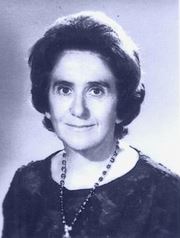 W
WAlina Margolis-Edelman was a Polish physician, Holocaust survivor and resistance fighter during the Warsaw Ghetto Uprising, who was forced to flee Poland during a revival of anti-Semitism in Poland in 1968. Joining Doctors Without Borders, she later helped found Doctors of the World, participating in medical missions in Africa and the Middle East, Latin America, and Eastern Europe. Simultaneously, she worked as a physician, practicing at Necker-Enfants Malades Hospital and the Maternal-Infant Protection Service in Seine-Saint-Denis. In 1990, she returned to Poland and began an association "Nobody's Children" to fight against child abuse in Poland. She was the recipient of numerous awards and honors.
 W
WMaurycy Orzech was a Polish-Jewish economist, journalist, politician and a leader of the Jewish Bund in interwar Poland. He was one of the commanders of the Bund during the Warsaw Ghetto Uprising.
 W
WA well-known Holocaust photograph depicts three Jewish women who fought in the Warsaw Ghetto Uprising, took shelter in a bunker with a weapons cache, and were forced out by SS soldiers. One of the women, Bluma Wyszogrodzka (center), was shot. The other two, Małka Zdrojewicz (right) and Rachela Wyszogrodzka (left) were marched to the Umschlagplatz and deported to Majdanek concentration camp, where Wyszogrodzka was murdered. Jürgen Stroop, the SS officer who commanded the suppression of the uprising, admired the bravery of female combatants and included the photograph in one of the copies of his official report. The photograph has become symbolic of Jewish resistance to the Holocaust.
 W
WLejb (Lutek) Rotblat was an activist of the Jewish resistance movement in the Warsaw Ghetto, a member of Jewish Combat Organisation (ŻOB), and a participant in the Warsaw Ghetto Uprising.
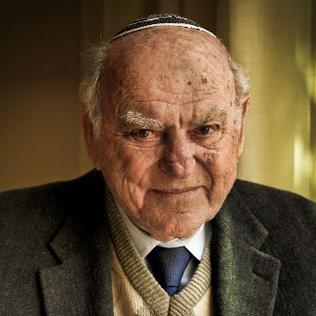 W
WLeon Chaim Lazer Weinstein was the oldest surviving resistance fighter of the 1943 Warsaw Ghetto Uprising. A member of the Jewish Combat Organization and later the Home Army during the later parts of World War II, Weinstein previously served in the Polish Army in the early 1930s and again during the German invasion of Poland in 1939.
 W
WIzrael Chaim Wilner, nom de guerre "Arie" and "Jurek" was a Jewish resistance fighter during World War II, member of the Jewish Fighting Organization's (ŻOB) leadership, a liaison between ŻOB and the Polish Home Army, a poet, and a participant in the Warsaw Ghetto Uprising.
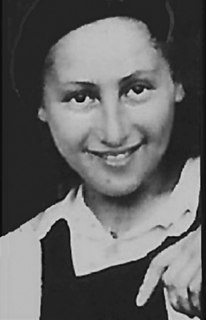 W
WRachel (Sarenka) Zylberberg was an underground activist and participant in the Warsaw Ghetto Uprising. She held a key role in rousing the rebellion. Zylberberg was a member of Hashomer Hatzair, the Zionist-socialist youth movement. After the German invasion of Poland at the onset of World War II, she left the capital for Wilno in northeastern part of prewar Poland, then returned to Warsaw together with Chajka (Chaikeh) Grossman and was actively involved in the Jewish resistance.
 W
WYitzhak Zuckerman, also known by his nom de guerre "Antek", was one of the leaders of the Warsaw Ghetto Uprising in 1943 against Nazi Germany during World War II.